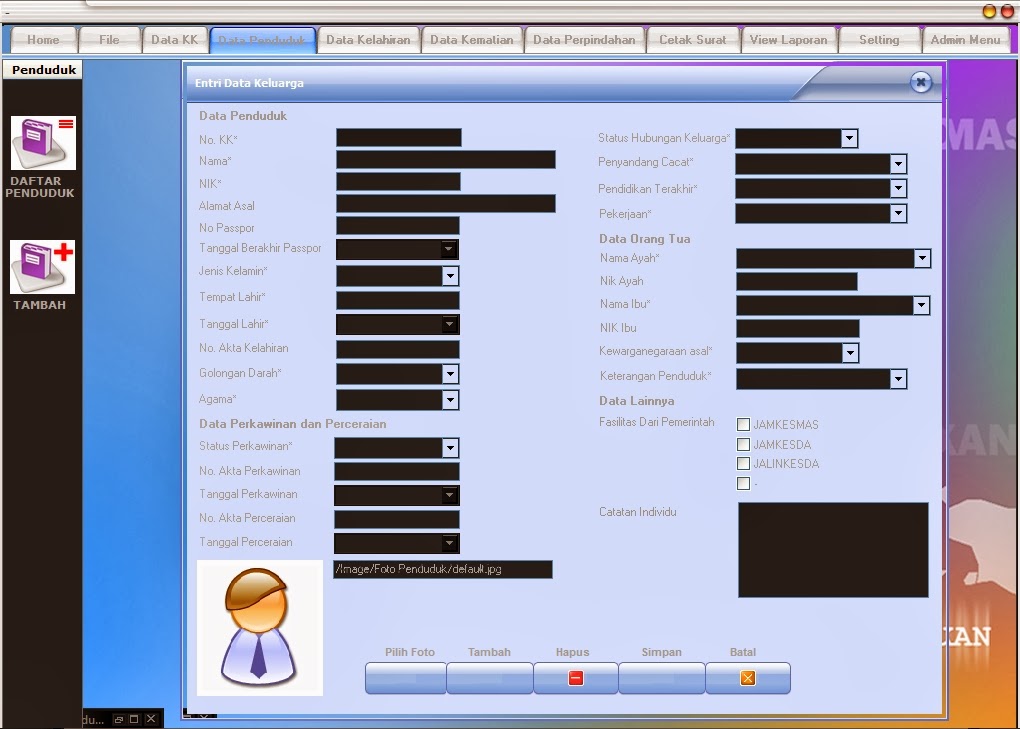

For non-Indonesian citizens, the card's expiry date is the same as that of their residency permit. In the case of Indonesian citizens, the card is valid for lifetime (previously it only valid for 5 years for citizens under 60 years old). The card is issued upon reaching the age of 17 or upon marriage. Separate versions exist for Indonesian and non-Indonesian residents. The Kartu Tanda Penduduk (literally: Resident Identity Card), commonly KTP, is an Indonesian compulsory identity card. Kristjanson, Patricia, Maren Radeny, Isabelle Baltenweck, Joseph Ogutu, and An Notenbaert (2005) 'Livelihood Mapping and Poverty Correlates at a Meso-Level in Kenya.' Food Policy 30 (5-6): 568-583. Įrenstein, Olaf, Jon Hellin, and Parvesh Chandna (2010) 'Poverty Mapping based on Livelihood Assets: A Meso-Level Application in the Indo-Gangetic Plains, India.' Applied Geography 30 (1): 112-125. īetti, Gianni, Andrew Dabalen, Celine Ferre, and Laura Neri (2013) 'Updating Poverty Maps between Censuses: A Case Study of Albania.' In Poverty and Exclusion in the Western Balkans, Economic Studies in Inequality, Social Exclusion and Well-Being 8. īenson, Todd, Jordan Chamberlin, and Ingrid Rhinehart (2005) 'An Investigation of the Spatial Determinants of the Local Prevalence of Poverty in Rural Malawi.' Food Policy 30: 532-550. Lanjouw, and Peter Lanjouw (2003) 'Micro-Level Estimation of Poverty and Inequality.' Econometrica 71 (1): 355-364. The data was compiled from SMERU's field reports, researchers' field notes during field research, publications in the news media, and local government websites, for 50 villages selected from SMERU's recent study sites.Įlbers, Chris, Jean O. The village-specific information provides additional socioeconomic information about the village in narrative form. Indicators available at the kelurahan and village level are derived from the Village Census (PODES) 2014, while several indicators in the previous poverty map that were calculated from Population Census have now been updated using estimations from Susenas 2015 up to the kabupaten/ kota and province level. Each category can be represented by one or more variables. These indicators are grouped into five categories: natural, financial, physical, human, and social capital. Livelihood Indicators and Village-specific InformationĪdditional information on sustainable livelihood indicators (Kristjanson et al., 2005 Erenstein et al., 2010 Benson et al., 2005) is also used to complete the expenditure-based poverty data.

#Software Data Penduduk Indonesia software#
The data processing is conducted using the software PovMap2-created by the World Bank-that provides more concise procedures for poverty mapping.

The model used to estimate poverty rates down to the village level is a provincial urban/rural model (totaled to 65 estimation models). After that, we estimated the poverty rates for the kabupaten/ kota, kecamatan, and village levels using the small area estimation method. In short, we estimated the factors that significantly affect current household consumption (using Susenas 2015), then used the predicted coefficients to estimate the census-year household consumption (using Susenas 2010), and weighted it. The counterfactual method is used to estimate the consumption of households in the census year using data from the 2015 household survey. Since the last population census (Sensus Penduduk) was conducted in 2010, the Poverty and Livelihood Map of Indonesia 2015 adopted Betti et al.'s (2013) counterfactual method to conduct small area estimations during the interval between censuses. The small area estimation method (see Elbers et al., 2003) requires survey and census data to correlate to the same year so they can be effectively compared. Updating the Expenditure-based Poverty Map


 0 kommentar(er)
0 kommentar(er)
